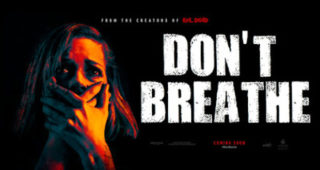Sony Pictures Entertainment is the first company to use 360-degree video within a Snapchat ad, offering an interactive push for its upcoming thriller, Don’t Breathe. Coming to theaters August 26, Don’t Breathe tells the story of three would-be burglars who target a blind man, but get far more than they bargained for. The blind man pursues them through his house, where they stumble upon dark secrets that tell a much more sinister story.
The 10-second Snapchat ad, rolling out in the United States, allows users to swipe up and explore environments within the movie. The ad will also be shown in the United Kingdom and Australia.

“Audiences increasingly expect more from us,” Aaron Wahle, senior vice president of international digital marketing at Sony Pictures Entertainment, said in a statement. “And, as a result, digital marketing departments now have more access to provide higher quality content to satisfy this thirst for engaging content through the mobile phone. This, in turn, means that more thought must be put into activities across the board—it’s not just about one-sheets and trailers anymore, but about creating incredible experience.”
Sony is also utilizing the power of influencers to promote Don’t Breathe. On July 28, online influencers from around the world united in Spain for an event to relive the experience of the horror film. Welcomed by director Fede Alvarez, the internet stars walked through a recreation of Don’t Breathe environments with night vision and GoPro cameras, with the aim of finding money that was hidden in different locations, under a strict timeline. Influencers were also introduced to the new Snapchat ad campaign.
For 360-degree experiences, it’s quickly gaining popularity as a means to promote films and television. Netflix offered a 360-degree and VR experience for Stranger Things, and EPIX created a fully-interactive 360-degree experience for Berlin Station, a spy thriller coming this fall.
Allowing would-be viewers to explore environments and scenarios creates personal experiences that audiences can take with them. This example of frontline marketing creates memories, and therefore, emotion-based buying decisions.

